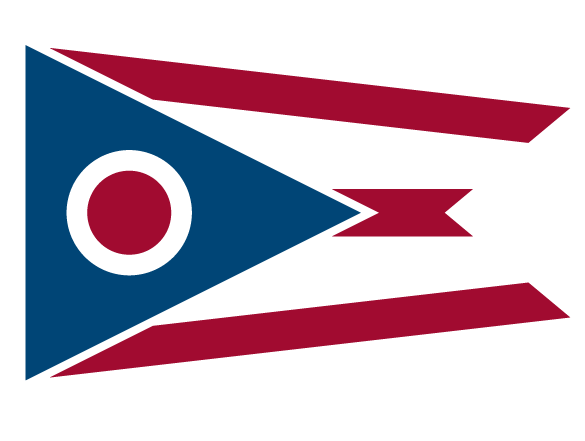Union SWCD 38th Annual Fish Fingerling Sale
What: 2025 Union SWCD Fingerling Sale
When: Pick-up orders on October 9, 2025, at 3:00 p.m.
Where: Union SWCD parking lot located at 18000 St. Rt. 4, Marysville, OH 43040
Click here to see the 2025 USWCD Fish Sale Order Form for more details
Please return the order form with payment by September 30, 2025!
Fish Descriptions
Bluegill
IDENTIFICATION: A deep, slab-sided fish with a small mouth and a long pectoral fin. Colors vary; however, the ear flap is always black, and bluegills often have a black blotch near the end of the soft dorsal fin. ADULT SIZE: Normally 6-10 inches, depending on habitat and population. FOOD: Insects, insect larvae, small fish, and fish eggs. SPAWNING: Peak spawning in Ohio occurs from mid-May to mid-June when water temperatures are 65-70°F. Nests are usually built in water 1-4 feet deep on sand or gravel bottoms, or other bottom substrates, even in heavily vegetated areas. Bluegill typically builds nests in large groups or beds. Males select an area and sweep out a saucer-shaped nest with their tails. The females then lay between 10,000 to 60,000 eggs in the nest, which are guarded by the male. The eggs usually hatch in about five days. RANGE AND HABITAT: Common throughout Ohio, but they prefer clear ponds and lakes with rooted vegetation.
Source: Sport Fish of Ohio- Identification - DOW
Hybrid Bluegill
The Hybrid Bluegill is a cross between a green sunfish and a regular bluegill. These fish are similar to a regular bluegill; however, they grow at a quicker rate and get a larger size. They have a larger mouth than a bluegill with yellow margins along the pelvic and anal fins. The hybrid bluegill are more aggressive than the regular bluegill because of the green sunfish mix in them.
They cohabitate well with channel catfish. For long-term success, restock every few years.
Source: Freshwater Farms of Ohio
Red ear (Shellcracker)
IDENTIFICATION: A deep slab-sided fish similar to the bluegill, except the ear flap, is black with a red or orange margin; a black blotch at the base of the dorsal fin is absent. ADULT SIZE: Normally 9 - 11 inches FOOD: Snails and other mollusks, crayfish, insects and insect larvae, and small fish. Their habit of eating snails led to the name “shellcracker.” With a preferred diet of snails, redear sunfish use specially modified teeth in the throat that allow them to crush a mollusk shell and extract the snail. SPAWNING: Usually during mid-May through June when water temperatures are 65° - 75°F. Preferred spawning locations are 1 - 4 feet of water with sand or gravel bottoms, or on any other bottom substrates, and in deeper water. RANGE AND HABITAT: Not native to Ohio; stocked in small lakes and ponds throughout Ohio. Found primarily in clear, warm waters with vegetation. Their attraction to submerged stumps has led to the name “stumpknocker.” Not as common as bluegills.
Source: Sport Fish of Ohio- Identification - DOW
Black Crappie
IDENTIFICATION: Black crappie closely resembles white crappie, but has a deeper body. Furthermore, their head, back, and sides are mottled with dusky or black blotches. These blotches do not form vertical bands as on white crappie. The most reliable characteristic, however, is that black crappie have seven or eight dorsal spines. ADULT SIZE: average 8 to 12 inches. FOOD: After hatching, crappie feed on zooplankton and insect larvae. As they grow, crappie switch primarily to a diet of small fish. SPAWNING: Black crappie spawn during May and June in Ohio. They nest on the bottom in and around brush, rocks, or vegetation in water between 1 and 5 feet deep. Males construct a nest by fanning out small depressions. Females then lay 5,000 to 30,000 eggs in the nest. RANGE AND HABITAT: Found throughout the state, preferring clear water containing aquatic vegetation. They are less tolerant of silt and turbidity than white crappie.
Source: Sport Fish of Ohio- Identification - DOW
Channel Catfish
IDENTIFICATION: Channel catfish are scaleless and have slender bodies, deeply forked tails, barbels around the mouth, and curved anal fins with 24-30 rays. Color varies, but is generally bluish-silver on the upper half of the body and silver to white on the lower half. Most young fish have spots on the body. They have sharp spines in the dorsal and pectoral fins. Some anglers mistakenly call channel catfish with few or no spots blue catfish, but blue catfish are found only in the Ohio River. ADULT SIZE: Most range from 12-14 inches. Can reach 10 pounds or more, especially in large river systems and productive lakes. FOOD: Insect larvae, crayfish, mollusks, and small fish. SPAWNING: Begins when water temperatures reach the mid-70s. Nests are secluded in natural cavities, banks, and burrows. RANGE AND HABITAT: Channel catfish are common in most large streams and lakes throughout Ohio. They are found in greatest numbers in areas with deep water, clean gravel and boulder substrates, and low to moderate currents.
Source: Sport Fish of Ohio- Identification - DOW
Yellow Perch
IDENTIFICATION: Sides are golden yellow to brassy green with 6 to 8 broad, dark vertical bands and a white to yellow belly. Many small teeth, but no large canines. ADULT SIZE: Normally 5-12 inches and weigh 1/4 - 1 pound; can exceed 2 pounds. FOOD: Adult aquatic insects and larvae, and small fishes. SPAWNING: Occurs from mid-April to early May. Eggs are deposited in adhesive bands over vegetation or on the bottom with no care given by the parents. RANGE AND HABITAT: Native to Ohio, yellow perch are found in Lake Erie and impoundments, ponds, and slow-moving rivers throughout Ohio. Yellow perch prefer clear water with moderate vegetation and sand or gravel on the bottom.
Source: Sport Fish of Ohio- Identification - DOW
Largemouth Bass
IDENTIFICATION: The back part of the jaw extends beyond the back border of the eye when the mouth is closed. A dark lateral band extends from head to tail. Smallmouth bass are similar in appearance, but the upper jaw does not extend beyond the back border of the eye when the mouth is closed. Spotted bass have a dark spot on the gill cover and spots or dark streaks on the lower side of the body. All spotted bass will have a patch of teeth on their tongue, whereas very few largemouth bass have these tooth patches. ADULT SIZE: Normally 12-15 inches and weigh 1-3 pounds, but can reach over 25 inches and 13 pounds. FOOD: Adults eat crayfish, frogs, large insects, and fish. SPAWNING: From mid-April to mid-June, they construct nests near shore in water from 1-15 feet deep. They prefer silt-free sandy or gravelly bottoms, but they will use any type of bottom. RANGE AND HABITAT: Largemouth bass are found in ponds, lakes, and slow, sluggish streams in every county in Ohio.
Source: Sport Fish of Ohio- Identification - DOW
White Amur
White Amur, also known as Grass Carp. The Amur is a true example of a herbivorous fish, surviving on nothing but plant matter alone. These fish grow very rapidly, with adults reaching nearly 4 ft in length and weighing up to 75 lbs. They live an average of 12-15 years. Real-world experience has shown that the continued control of aquatic vegetation by White Amur is a safer, easier, and more economical approach over the long term than any other physical or chemical control strategy for ecologically enhanced and self-sustaining ponds and lakes. If you are looking for a way to control vegetation and/or algae in your pond, we recommend adding 10-15 per acre for a normal pond and more for a fertile pond. The very reason that you want grass carp in your pond makes them harmful to wild habitats. They remove large amounts of aquatic vegetation, which our native fish, waterfowl, and other creatures need to survive.
Sources: Freshwater Farms of Ohio
Fathead Minnows
Fatheads are found in small creeks, especially in muddy ones, and in ponds and small lakes, mainly in western Ohio. They are one of the most commonly used bait minnows in Ohio. Fatheads are propagated and sold at bait stores throughout the state. Fatheads grow to about 3 inches. Fathead minnows are not only good live bait but are also beneficial in providing forage (food) in newly stocked bass-bluegill ponds. These minnows begin spawning during the early spring, often several months before the bluegill spawn, and provide a valuable food source for small bass fingerlings. Fatheads can increase the growth rate of bass during their first year of life.
Source: Sport Fish of Ohio- Identification - DOW
The Union Soil and Water Conservation District and the United States Department of Agriculture (USDA) prohibit discrimination in their programs based on race, color, national origin, sex, religion, age, disability, political beliefs, and marital or familial status.
 An official State of Ohio government website.
Here's how you know
An official State of Ohio government website.
Here's how you know
